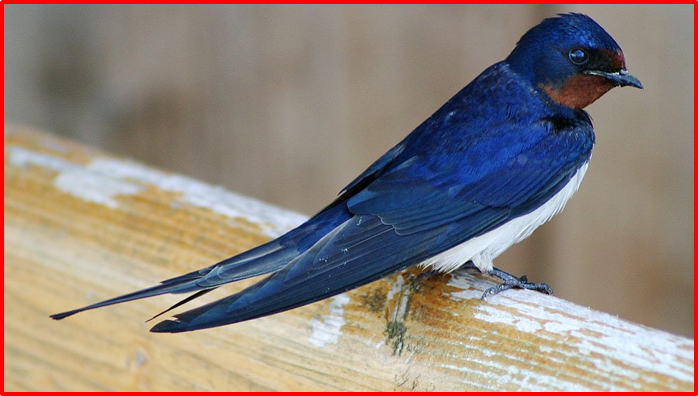 |
|
Barn swallow (image from
wikipedia.org by Malene Thyssen)
|
Fukushima’s nuclear disaster has
caused genetic damage, a decline in the population and other changes to
non-human organisms from plants to butterflies to birds in the area, US and
Japanese scientists say.
In a series of articles published in
the latest of US science magazine Journal of Heredity, researches revealed the
widespread impact of the March 2011 Fukushima nuclear disaster on biological
organisms in the region.
“A growing body of empirical
results from studies of birds, monkeys, butterflies, and other insects suggests
that some species have been significantly impacted by the radioactive releases
related to the Fukushima disaster,” stated Dr. Timothy Mousseau, of the
University of South Carolina, lead author of one of the studies.
Scientists of all the studies agreed
that chronic low-dose exposure to ionizing radiation leads to genetic damage
and increased mutation rates in reproductive and non-reproductive cells.
In one study, Mousseau compared effects on non-human organisms of the
Fukushima catastrophe with the 1986 nuclear disaster in Chernobyl, Ukraine.
Barn swallows with abnormal white
spots on their plumage were found near the Chernobyl plant after the disaster
while similarly plumaged swallows in Fukushima were also reported in the wake
of the 2011 crisis, the researcher said.
“Barn swallows with aberrant
white feathers were first detected in Fukushima in 2012 and were observed in
increasing frequencies in 2013 and 2014. Although such partial albinos are
believed to have reduced probabilities of survival, there are sufficient data
to suggest that this character can be inherited and may at least in part result
from a mutation(s) in the germline, based on parent–offspring resemblance,”
the study said.
Mousseau said that researchers were monitoring these
species for signs of population decline due to abnormalities in mitochondrial
DNA, since the same problem was reported in Chernobyl.
Genetic mutations have been previously found in three generations of pale grass blue butterflies living near the crippled Fukushima plant. Researchers found size reduction, slowed growth, high mortality and morphological abnormality both at the Fukushima site and among laboratory-bred butterflies with parents collected from the contaminated site.
Genetic mutations have been previously found in three generations of pale grass blue butterflies living near the crippled Fukushima plant. Researchers found size reduction, slowed growth, high mortality and morphological abnormality both at the Fukushima site and among laboratory-bred butterflies with parents collected from the contaminated site.
“Non-contaminated larvae fed leaves from
contaminated host plants collected near the reactor showed high rates of
abnormality and mortality,” explained Dr. Joji Otaki of the University of
the Ryukyus in Okinawa, Japan.
Researchers also suggested that there may be possible
evolution of radiation resistance in Fukushima butterflies as well.
Another study showed the impact of radiation on rice.
Healthy seedlings were exposed to low-level gamma radiation at a contaminated
site in Fukushima Prefecture. After three days, such effects as activation of
genes involved in self-defense, ranging from DNA replication and repair to
stress responses to cell death were observed.
Mousseau called for continuing studies at Chernobyl
which could predict likely effects in the future at the Fukushima site.
Following the Chernobyl nuclear power plant meltdown scientists were able to
obtain biological samples for research after extensive delays which resulted in
limited information on the impacts. At Fukushima scientists began collecting
information only a few months after the catastrophe, which enabled them to
reveal the serious effects on non-human organisms.
"Detailed analyses of genetic impacts to
natural populations could provide the information needed to predict recovery
times for wild communities at Fukushima as well as any sites of future nuclear
accidents," Mousseau said. "There is an urgent need for
greater investment in basic scientific research of the wild animals and plants
of Fukushima."
The
findings raise fears over the long-term effects of radiation on people who
faced exposure in the days and weeks following the disaster.
Culled from RT.com


No comments:
Post a Comment